Tips for painting second-hand furniture with colour consultant Harriet Slaughter
A dopamine hit of colour inspiration
As somewhat of a traditionalist, I’m wary of using the word upcycle but I do like the concept behind it - taking something that’s unused or unwanted and giving it a new lease of life. Each to their own, and whilst personally I don’t like to get too carried away with customising furniture, I’m not averse to giving second-hand finds a lick of paint. It’s a great way to add interest to a space, especially if you’re renting, want to avoid the cost of painting an entire room or are looking to add more colour to your home and want to start small. It’s also a handy way to use up leftover paint and with small items like lamps and mirrors, a couple of tester pots go a long way.
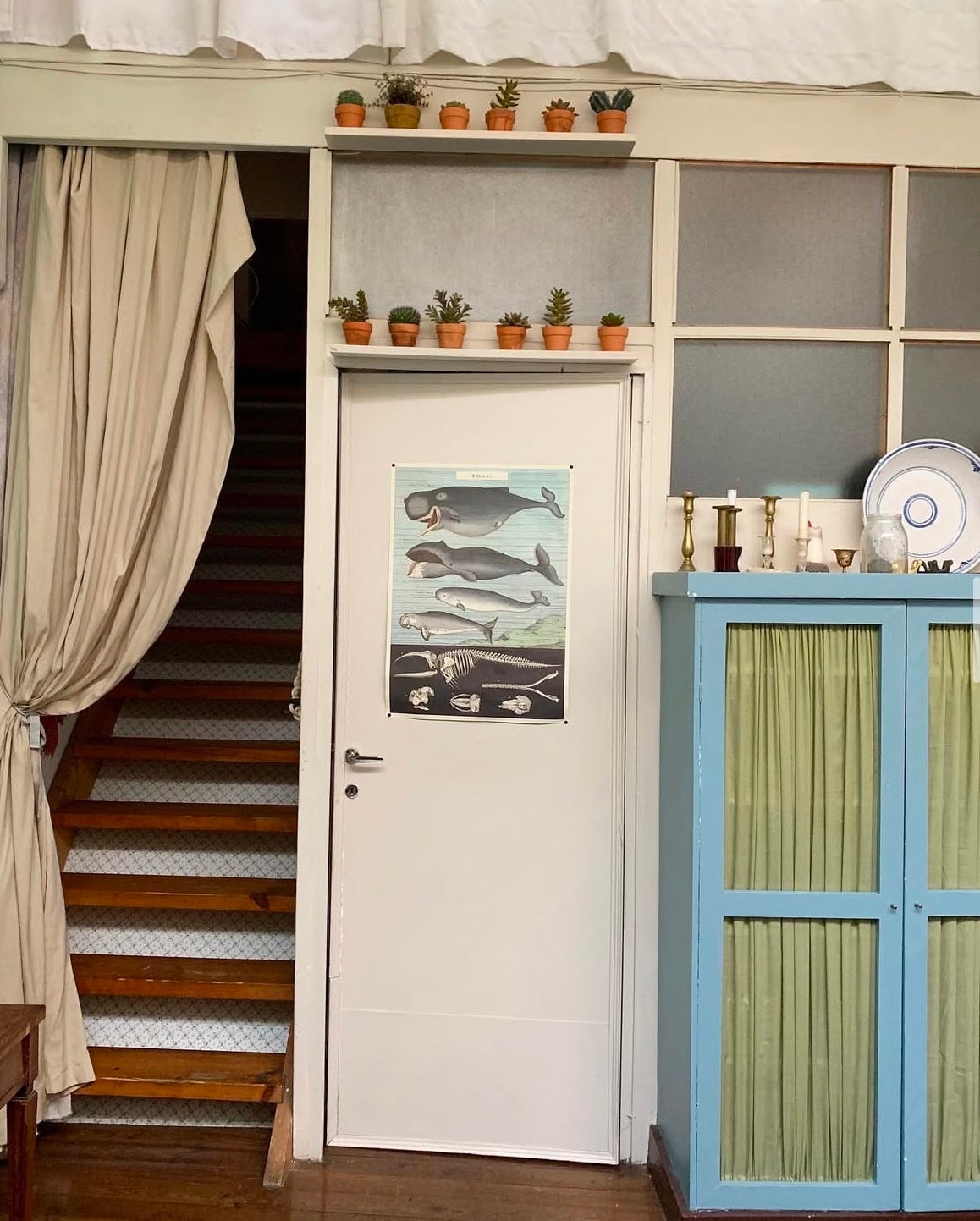
I’ve painted a few things before including the chest of drawers below in Farrow & Ball’s ‘Bancha’. It took two attempts to get the right colour but it’s been five years now and I still love it. I’ve got a list of things I want to paint including another chest of drawers, a small square mirror and a side table, but I still struggle with committing to a colour, and when I’m taking the plunge to alter a piece of furniture I want to know I’m going about it the right way. So, I thought I’d ask Creative Colour Consultant Harriet Slaughter to share her tips and very kindly, she said yes.
I’ve been following Harriet for a while on Instagram and her account is a real dopamine hit of colour in the wild. Harriet previously worked as a florist, which ignited a love of curating colour, before working as a painter and decorator and then joining Farrow and Ball as an in-store colour consultant. I love the way that she sees and uses colour. Harriet also generously shares her favourite paint colours as well as advice on how and where to use them in your home to get the best out of them. If you don’t follow her already, I highly recommend you do. She offers virtual and in-person colour consultancy appointments - find out more about her services on her website.
Tips for painting second-hand furniture with Creative Colour Consultant Harriet Slaughter
Why do you like painting furniture? What can it bring to a space?
Painting furniture is such a wonderful way to add a bold colour to a room without painting the whole room. It’s like adding little gems to a space and you can have so much fun selecting a shade you like, I mean you can literally choose anything! If you’re into neutral walls but sometimes feel sad that you haven’t added more colour, it’s definitely a way of making your mark on a space. Plus, if it’s free-standing and you move house, you can take it with you, unlike the walls or built-in furniture.
If you’re looking for a second-hand piece of furniture to paint, what should you look for? Are there some things you’ll get better results with?
Small chairs and wooden lamp bases are a really easy win if you haven’t painted anything before. I also love the idea of painting something a different colour on the outside to the inside, so I will often look for small glazed cupboards or large dressers. This way you can go for a safer colour on the outside but add a daring shade on the interior.
In terms of wood, I generally avoid oak and dark wood. Oak is difficult to apply paint to as it has an open grain and often requires filling the grain to get an attractive result. Mahogany, teak and other hardwoods are difficult because they are ‘oily’ and will resist paint. Of course, it is possible to paint them but you might find you’re not entirely happy with the results and the paint may come away over time. Pine is generally a safe option - use a knotting solution and a primer, and you’re good to go.

What if you’re in a dilemma about painting something - should you feel guilty about painting older ‘antique’ pieces?
I personally don’t think you should ever feel bad about painting something. You can always repaint it a different colour if it isn’t working for you. And if you really didn’t like it as it was, it’s a great way to re-use something existing, rather than buying new. Unrelated to furniture but a few years ago I wasn’t sure whether or not I should remove the original dado rails in our Georgian cottage. I did, and I’ve never looked back. In fact, I think it looks more in keeping now than it did before. The lesson for me was - stick to your guns, not everyone will approve of your interior choices but you know what you’re aiming for!
If you’ve never painted a piece of furniture before, what’s a good thing to start with?
Something small, like a lamp base. You can do it on the kitchen table and it doesn’t require much paint. They are readily available in charity shops, so you can usually pick one up for a steal. Colour wise, you can afford to be bold with a small item too - try a punchy red like ‘Bronze Red’ from Little Greene or a really good blue such as ‘Eaton Square’ by Mylands.
And now for the practical part. How to prep?
I don’t always practice what I preach but sanding back and then priming is really the best way forward. Even if you just do the very lightest sand, to create a 'key' in the woodwork that will help paint to bind, it’s always worth it in the long run. The same goes if something’s already been painted - give it a light sand. And also check that no waxes or lacquers have been added on top as these will resist new paint.
Primer wise, my favourite is Zinsser Bull’s Eye 1-2-3 Water based primer - it doesn’t smell quite as strong as some others do and is quite a miracle worker. You can also get it in a white, mid or deep tint depending on the colour of the top coat of paint you have chosen.

What’s the best type of paint to use on wood? Eggshell vs Gloss?
This is totally dependent on the look you’re trying to achieve. I generally recommend Eggshell - Farrow and Ball’s Estate Eggshell is probably my preference. It’s not the decorating trade’s favourite as it requires quite a few coats, but I love how it gets more matte over time and it has great adhesion. You could also use a ‘Dead Flat’ finish by Farrow and Ball for a super chalky look, or get experimental with a stained wax polish over emulsion.
Gloss will always feel a bit more ‘zhuzh’-y. The old school oil gloss finishes are probably more attractive than the modern water-based ones, but a mighty pain to paint with - I’d check out Little Greene’s new Intelligent range which includes a quick-drying gloss.
What type of brush? Or any other useful tools?
Flat brushes are great if you’re just painting a plain colour, but if you’d like to add any pattern (a la Charleston House perhaps!), a round brush can be useful. Use masking tape to create clean lines - the best is the Tesa Pink stuff.

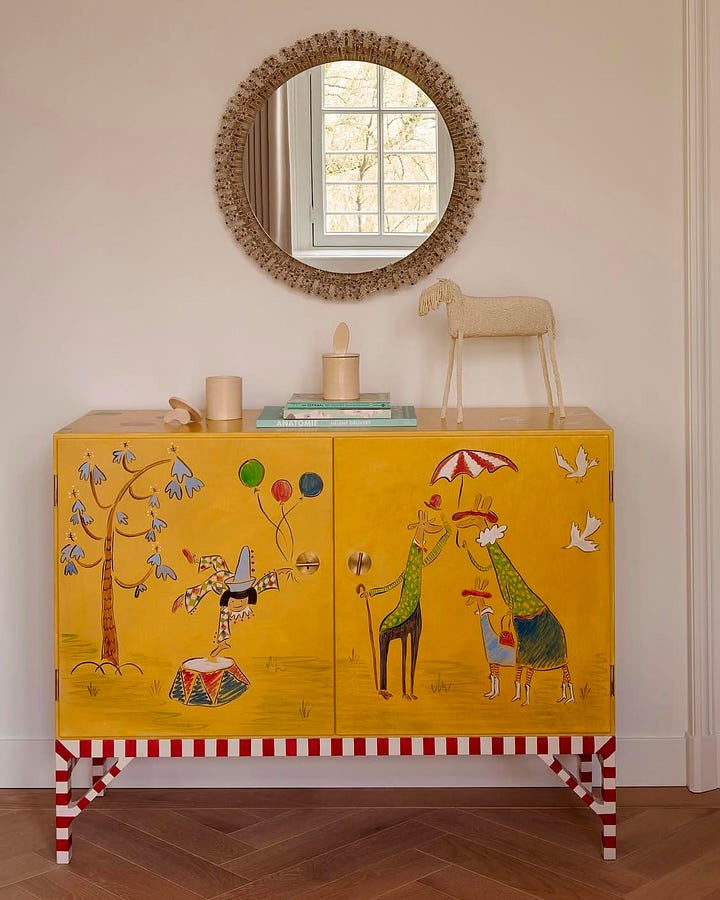
If you’re painting drawers, cupboards/wardrobes how far do you take the paint?
I personally like to take it round the corner on to the edge of the drawers, but not inside. I will generally use the aforementioned Tesa masking tape for a clean edge. With cupboards, I like the inside of the doors to be the same colour as the exterior but there are no rules! With anything, if you are using two colours, paint the lighter one first.
I know it depends on the room, but any particular colours you’d recommend or have used before and loved?
A tricky question as it completely depends on what you’re in to, but here are some things I’ve loved recently:
Daisy Murray’s clotted creamy cupboards in ‘Farrow’s Cream’ by Farrow & Ball
My mother-in-law’s larder cupboard painted in ‘Hopper' by Little Greene
A blue cupboard with green detailing in Hydra, Greece via @placesmilano
My brother’s wardrobe painted in 'Cook’s Blue' by Farrow & Ball
A big thank you to Harriet for taking the time to answer these questions. I hope you found them as helpful as I did and that it might inspire you to get creative in the new year with a painting project or two.
Until next time x




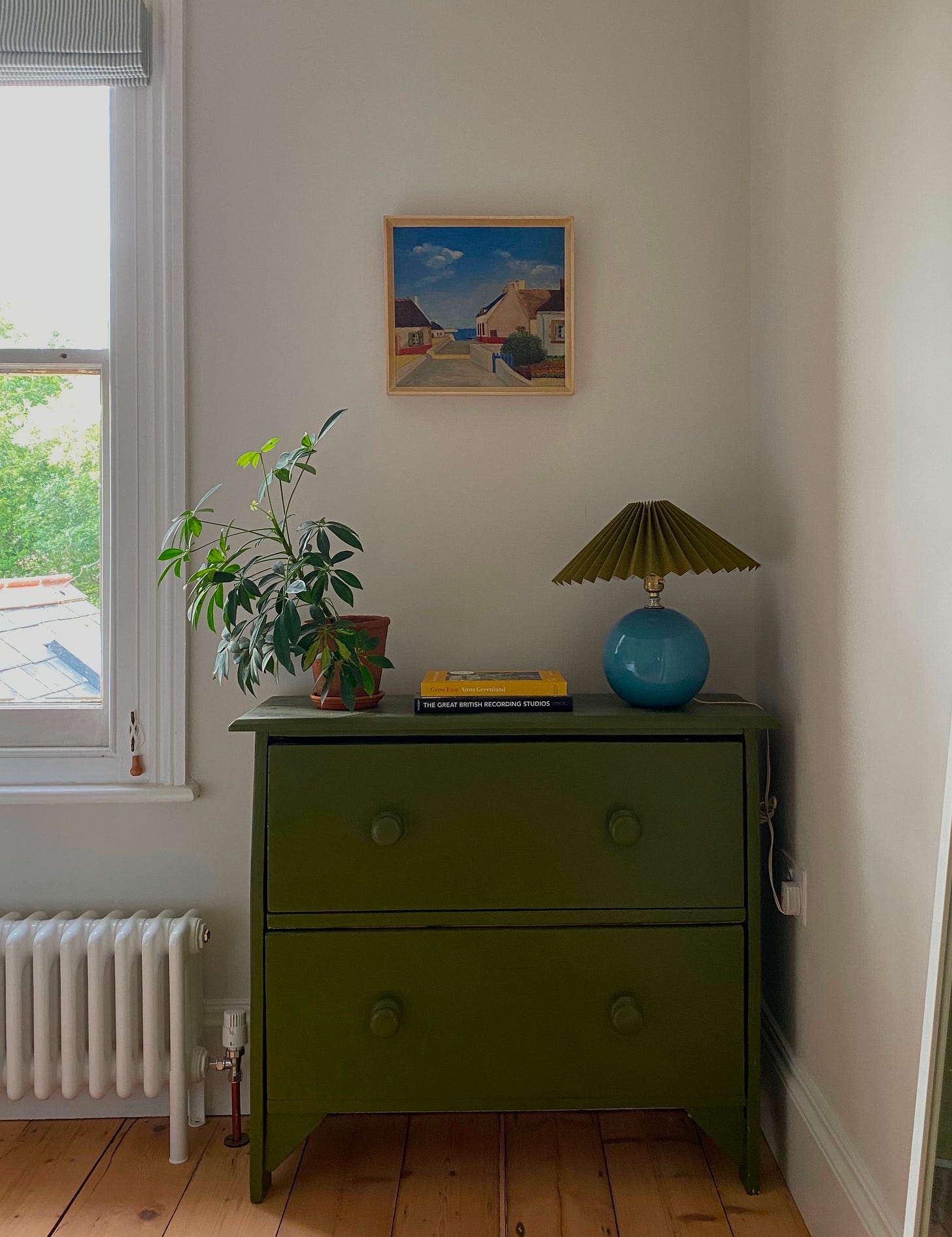

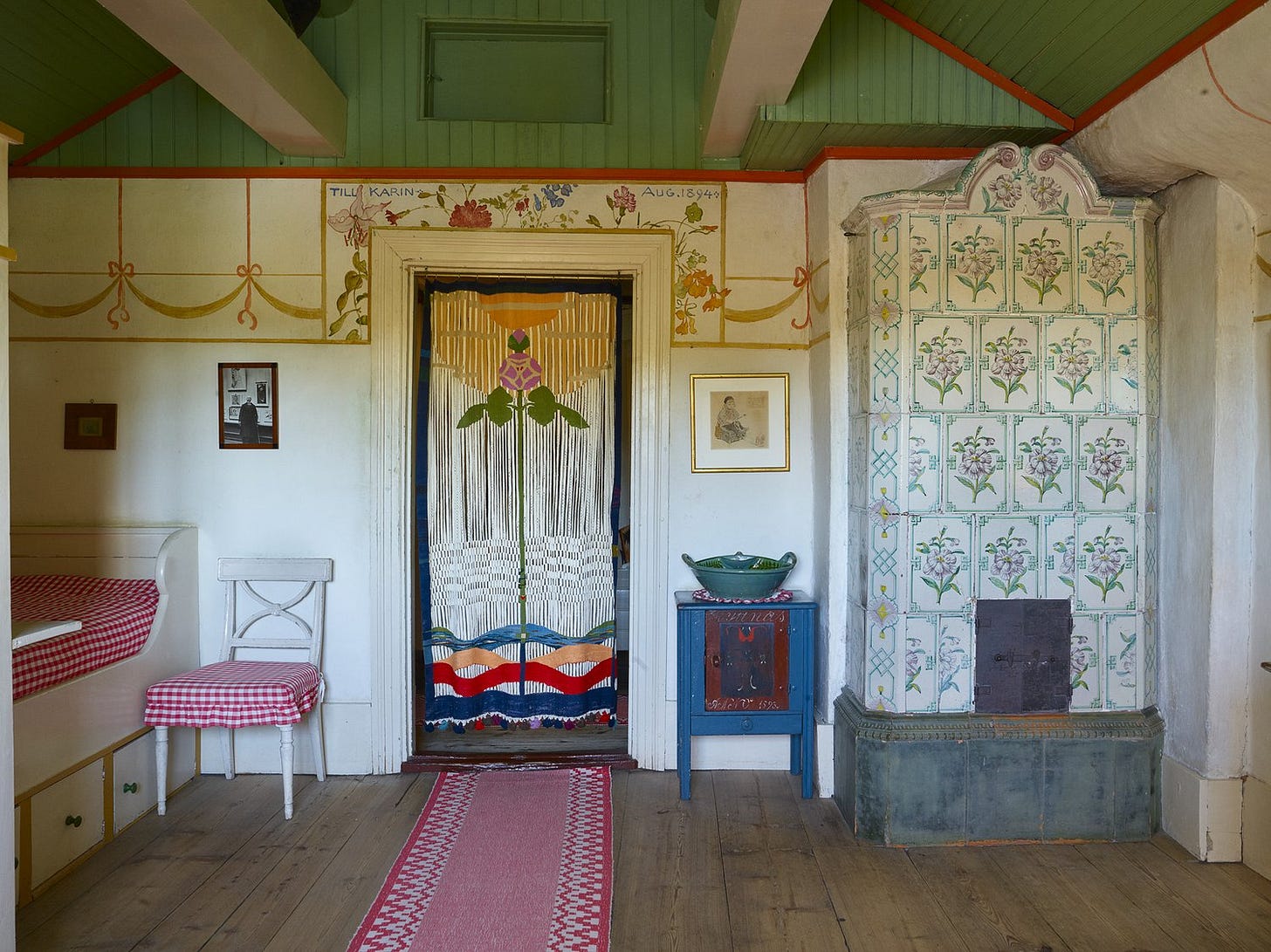
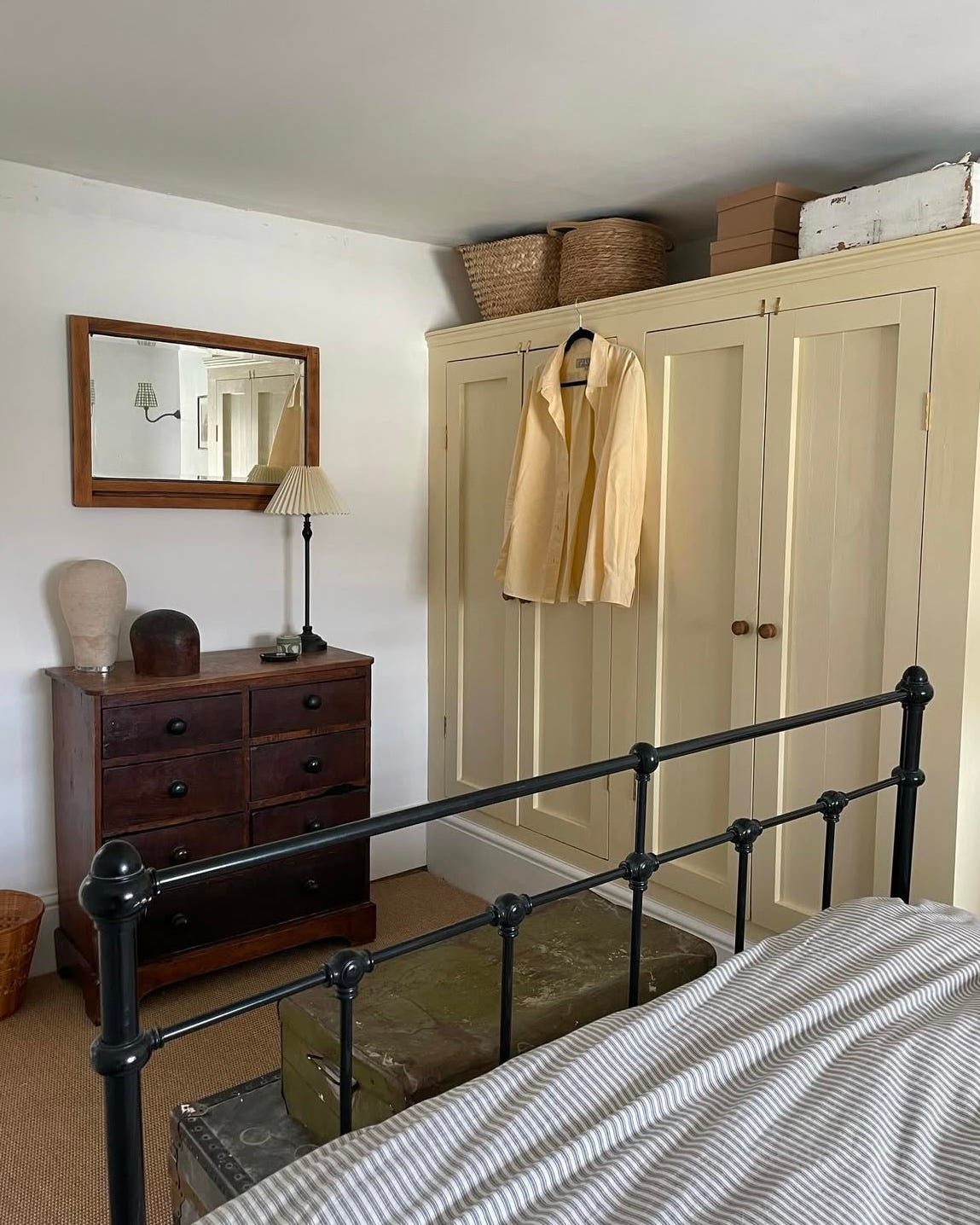
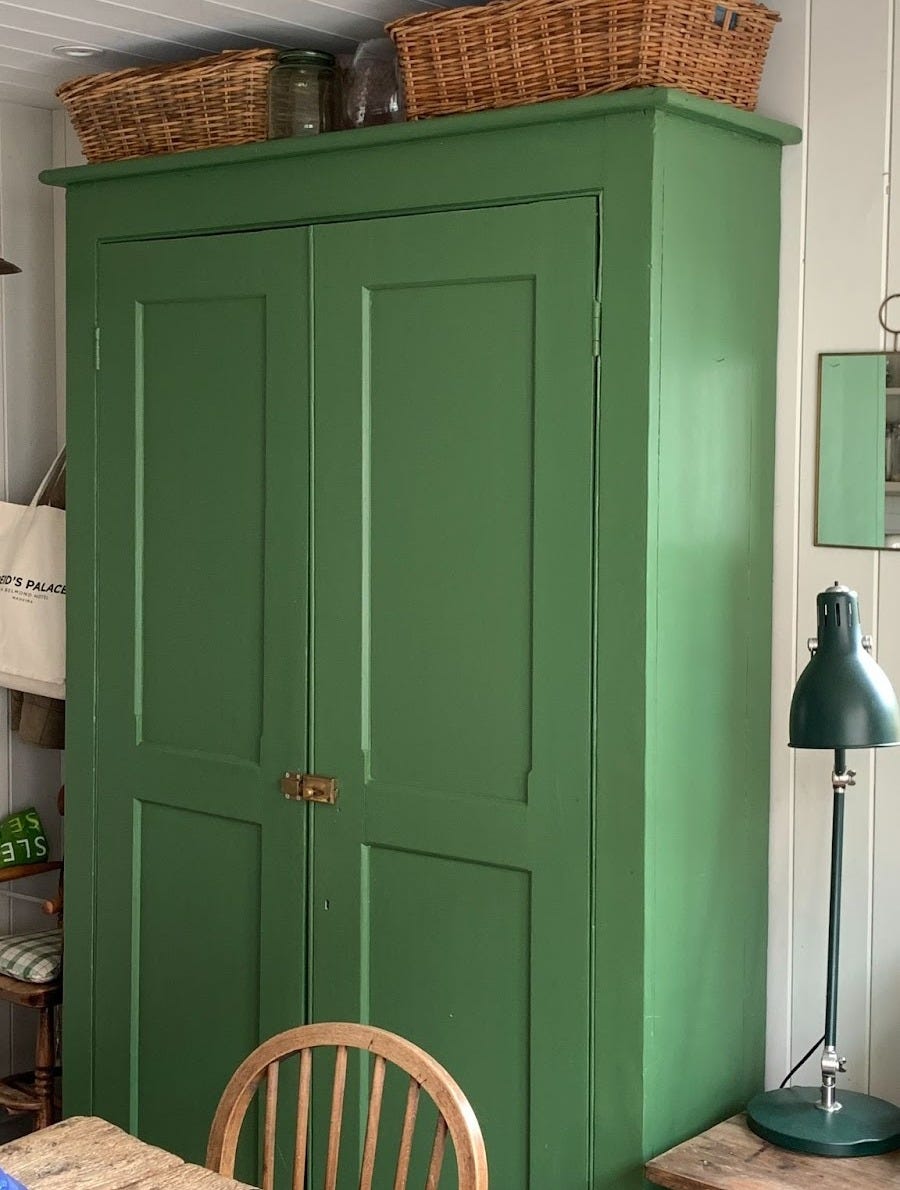
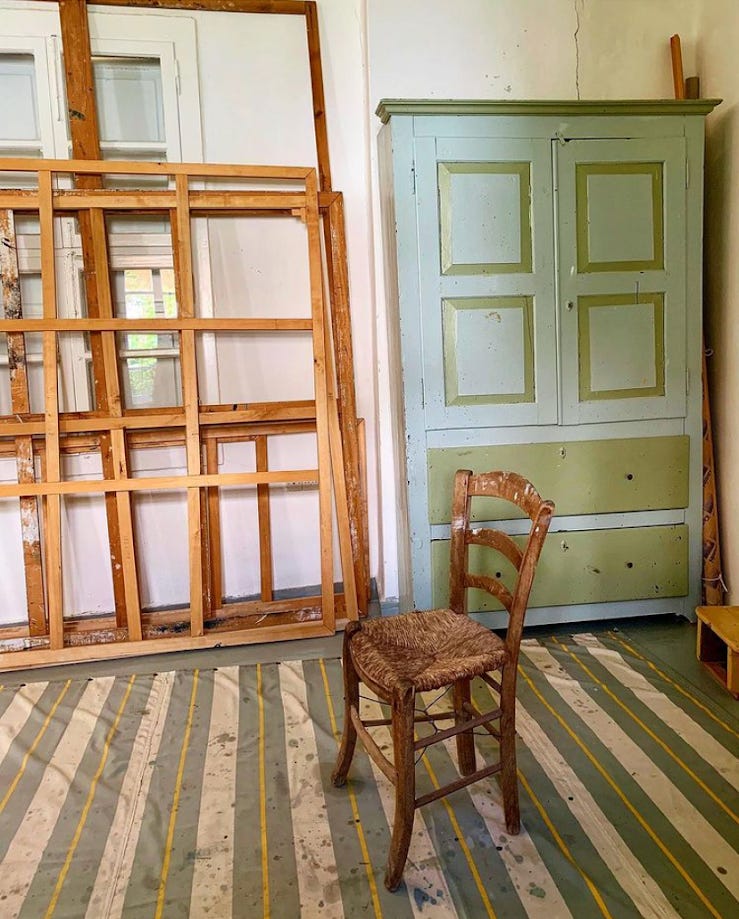

Hey! Where did you get the two drawer chest from? Thanks